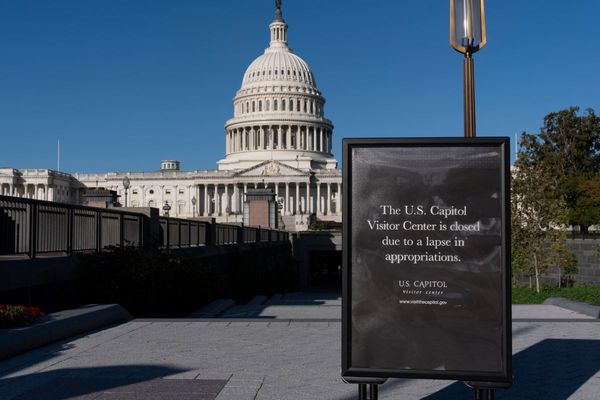
This week’s release of Marvel’s latest, Doctor Strange, brings magic, sorcery, extra-dimensional travel and, most importantly, well-tailored robes into the comic book film universe. Those who are au fait with the paranormal tend not to be the heroes in stories like these. One need only think back to this summer’s Ghostbusters reboot to recall a film in which science, reason and expensive technological breakthroughs triumph over mystical hoo-ha.
But the whole point of Doctor Strange is that the titular protagonist enlightens himself through black magic. The character rose to prominence just as the American counterculture was beginning to dabble in forms of spirituality outside of the Judeo-Christian establishment. The adventures of Stephen Strange tapped into eastern mysticism, psychedelic trips into alternate realities, and the absolute certainty that there is more to existence than what you can see with your eyes. (In fact, Doctor Strange possesses a third eye – the Eye of Agamotto, an amulet he wears around his neck that gives him special abilities such as time travel.) The mystical might not be in fashion today (save for your Williamsburg or Silver Lake denizens carving out a weekend to take ayahuasca), but in the 1960s it was at the forefront of the national conversation in the US.
The world of the supernatural and the darkly spiritual loomed large on the pop culture landscape around the time of Doctor Strange’s creation. Acts such as the Doors, David Bowie and Jefferson Airplane were singing about all manner of mind-expanding experiences. Movies such as Rosemary’s Baby, the Exorcist, the Omen, the Wicker Man and the Devils portrayed black magic, paganism and the like in direct opposition to the benign tenets of Christianity. In these movies, the devil is real and he uses his power to seduce the physical realm with impunity. One could point to the fallout from the hippie movement’s fascination with psychotropics and the aftermath of the Charles Manson killings as the impetus for the interest in such things, but Rosemary’s Baby (directed by Roman Polanski, whose pregnant wife Sharon Tate was a Manson victim) came out before Manson, Altamont and the end of the so-called Summer of Love.
Unlike those films, which were targeted at adults, Doctor Strange was (and is) for children. Selling a story about black magic to kids was no easy feat, especially one that existed in an approximation of the real world rather than a made-up realm where the “natural rules”, as they’re referred to in the Strange film, don’t apply. In 1974, Steve Englehart, Neal Adams and Frank Brunner created the character Sise-neg (Genesis spelled backwards) in the pages of the Marvel Premiere series starring Doctor Strange. Sise-neg was a sorcerer rival of Strange who used time travel to destroy the universe, then recreate it in his image. In the end, he merely recreates the universe as it was, broaching the question of whether or not this being was actually God itself. The religious implications were so controversial that Marvel editor Stan Lee considered retracting the entire story until Englehart and Brunner published a fake letter from a fictional minister praising the work.
It’s Doctor Strange’s connection to our conception of reality that opens him up to such criticism. Setting a fantasy story in a far-off land, alternative universe or parallel reality affords the writer a freedom from allegations of apostasy or heretical thinking. The Lord of the Rings trilogy, The Golden Compass and countless other stories that might seem blasphemous to the true believer get off the hook because they don’t exist in our conception of reality. Often, these works dabble within a world that resembles the distant past, which further removes it from those thorny questions of divinity. Star Wars pulled off that sleight of hand while still getting to play around with sci-fi iconography by explaining in the first frame of the movie that it was a story from “a long time ago, in a galaxy far far away”. George Lucas could invent an entire religion that governs the fate of the universe while never once having to connect that to people’s actual belief systems. Star Trek (and also Asimov’s seminal Foundation trilogy), on the other hand, is a covertly atheist story about humanity overcoming conflict through science and reason.

By the 80s, the Indiana Jones series posited that pretty much every religious or occult myth was real – the Ark of the Covenant, the Holy Grail, Hinduism, etc. Does it matter that Jesus, Kali Ma and aliens from another dimension all exist? I guess not. Perhaps they’re all pals in some far-off land. In the 90s, The Blair Witch Project, The Craft, Buffy the Vampire Slayer and the hugely popular X-Files series all carried the banner of the occult in culture. The X-Files made a lot out of the debate over faith v science and religion v the paranormal, often cracking the audience over the head with a giant wooden cross of thudding symbolism.
In 2016, Charlie Brooker’s Black Mirror generates scares by showing that our greatest inventions will be our undoing, or more accurately, that our hubris and desire to overcome our physical limitations are ultimately destructive – a notion film-makers such as David Cronenberg were playing with parallel to the last occult boom in pop culture in the body horror works of Videodrome and Scanners. The occult retains a modicum of its power to terrify in the age of the iPhone, though. Even though the Blair Witch sequel/reboot failed to relaunch that franchise, 2015’s The Witch was very much in the tradition of the classic occult horror films while also succeeding at the specialty box office.
The Doctor Strange film digs up these old-timey notions of spirituality and inverts them. Here, the occult can set you free. It can be used to save humanity. More importantly, it exists in a world very much like our own. Sure, Doctor Strange hangs out in the Sanctum Sanctorum and his battles with Dormammu or Baron Mordo usually take place in some other realm, but that Sanctum sits on Bleecker Street in a fictional version of the real Manhattan. He’s just a regular guy who learned to manipulate the spiritual realm through years of study, not a wizard designated as such by genetics. Notions like fate and familial superiority, which are prevalent in Star Wars and Harry Potter, are forsaken in favor of the more traditionally puritanical American ideal of hard work. His sidekick, Wong, might tell him he’s born to study the mystical arts, but that’s not because his dad was a sorcerer. There may not be the hi-tech gadgets of something like Ghostbusters, but Doctor Strange shares with those futuristic paranormal fantasies the idea that no matter what the discipline, knowledge is power.







